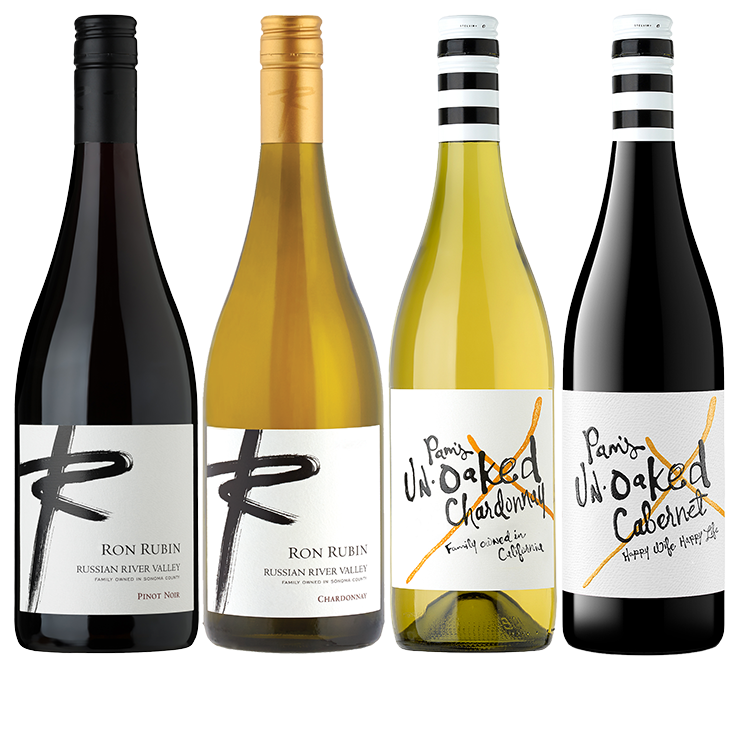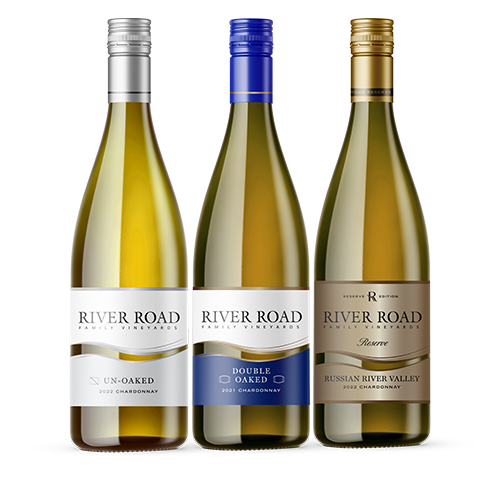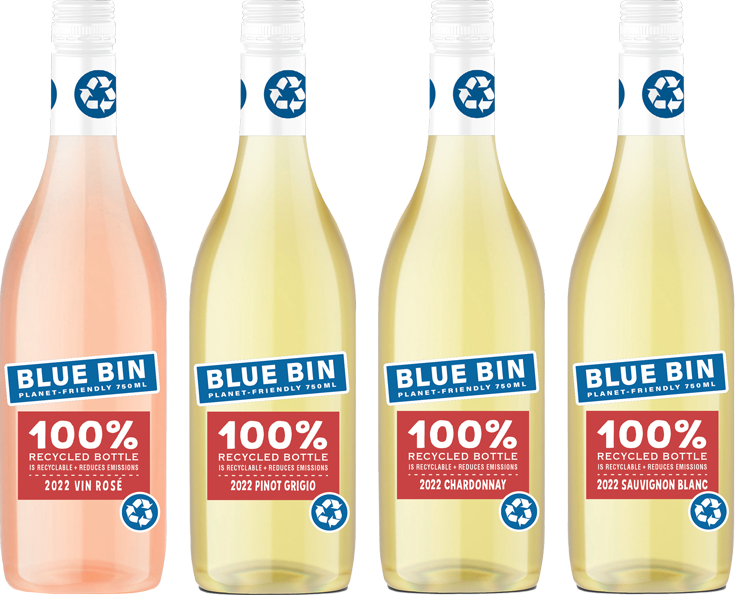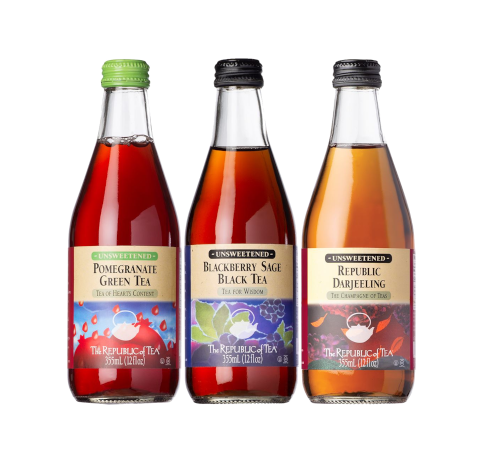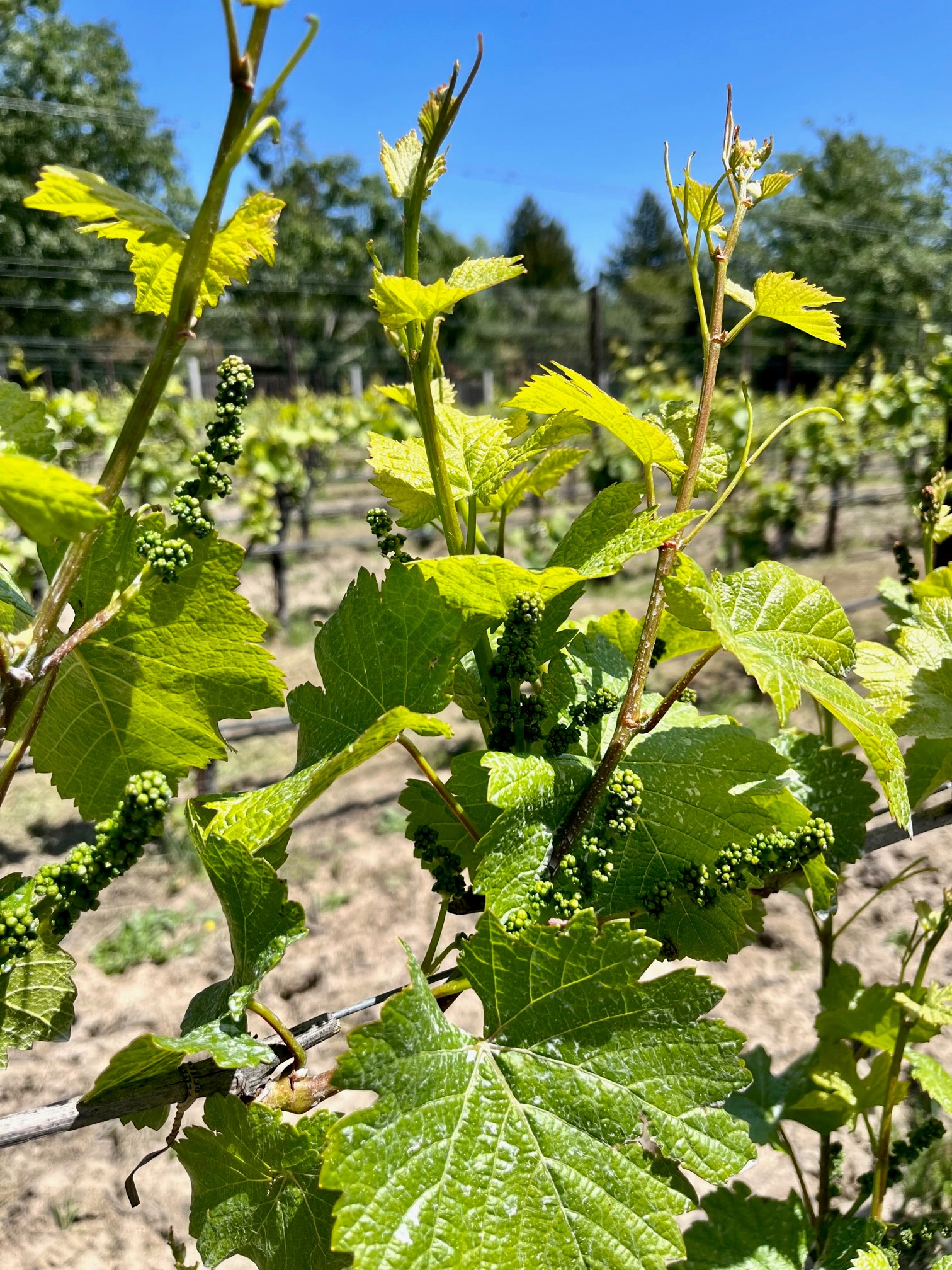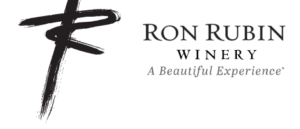Vineyard Update
April has been another dynamic month in terms of weather, we are thankful to have received an additional three inches of rain at the winery. This helps to bring us to about 80% of average. In addition to the rain, we had quite a mix between warm and cold days. Along with the cold days, there were many cold nights where it was necessary to turn on our frost protection system to protect the young grape vine shoots from damage due to the freezing temperatures. I am happy to report that despite the manic nature of the weather this past month, the vines are happy and growing quite fast. The clusters are big and there is a considerable number of them on all the vines.
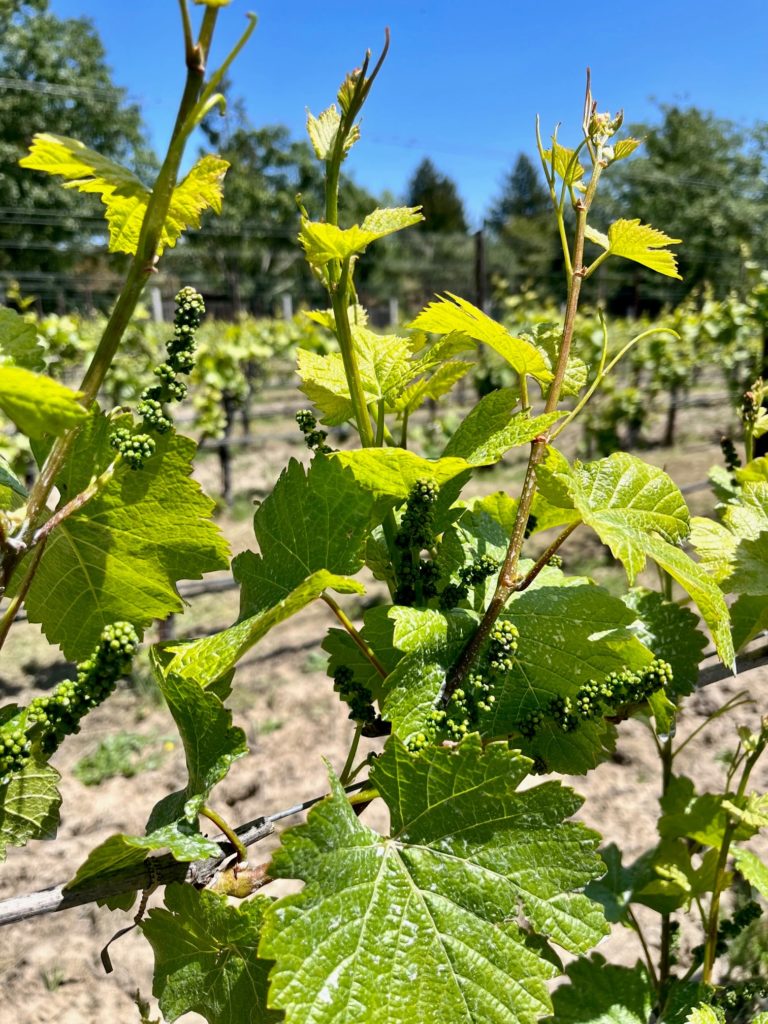 The progression of fruit in the Estate vineyard
The progression of fruit in the Estate vineyard
Vineyard Manager, Alvaro Zamora, is busy moving the catch wires down to the lower positions on the trellis system. This will ensure that the wires “catch” or support the shoots as they grow and do not break or sustain damage during windy conditions. The next big test for the vines will be the flowering stage or “bloom” which occurs about a month to six weeks after bud break. Bloom or flowering is when bunches of tiny flowers bloom from the new vine shoots. Grape vines are self-pollinating, meaning each of these flowers has the potential to turn into a single berry. During bloom the delicate grape flowers are very vulnerable to damage from wind, rain and or unexpected late frost. At this point the weather looks like it will be mild and provide perfect conditions for good fruit set. We will remain vigilante and do everything we can to ensure a good crop moving forward.
Bottling
Last month I wrote about the process of blending wine. Blending is typically the final stage before bottling. This past month we blended and bottled the 2021 River Road Russian River Valley Chardonnay. Bottling is one of the most important steps in successfully producing an exceptional wine and I’d love to share some key steps and information about the process.
Filling:
- The 1st step in the process, filling the bottles with wine!
- Filling helps to preserve and produce a fresh great tasting wine, you must keep the oxygen out! Prior to filling, the bottle is purged of air using nitrogen gas.
- After the oxygen is out of the bottle it goes into a specialized filler and slowly gets filled. The nitrogen blankets the wine to protect it during this step prior to capping.
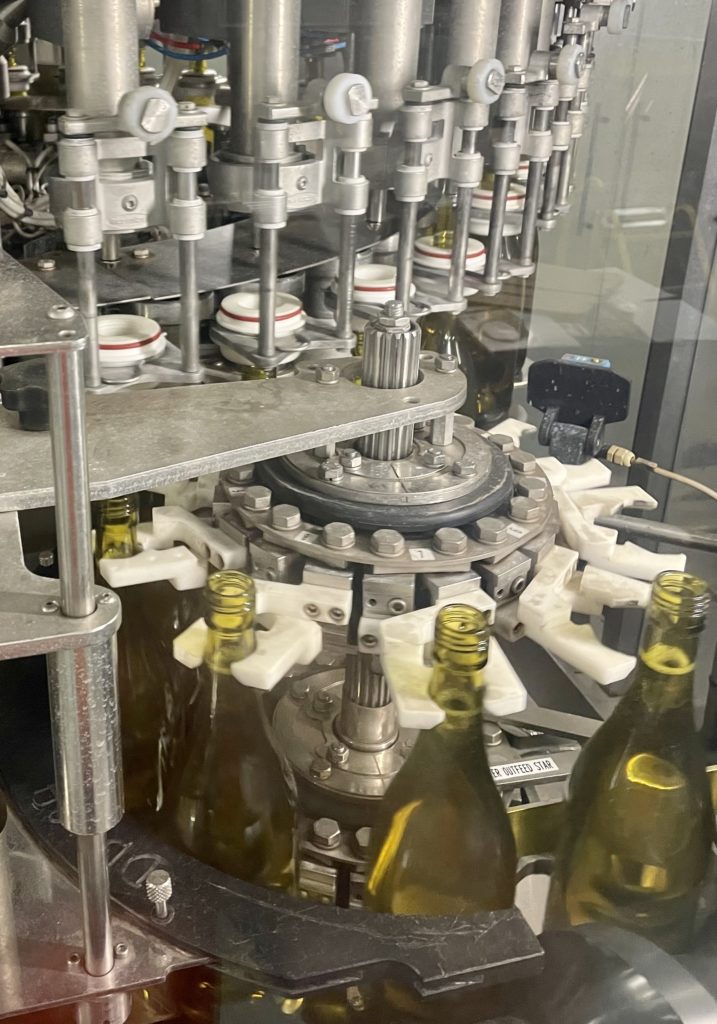 The bottles being filled with 2021 River Road Reserve Chardonnay
The bottles being filled with 2021 River Road Reserve Chardonnay
Sealing:
- We choose to use a Stelvin Twist-off capsule to seal our bottles. The twist-off closures offer a high-quality seal and have specialized liners that allow the perfect amount of oxygen into the wine that ages it gracefully for every bottle.
- Good application is key for a successful sea. The machine that applies the twist offs is high tech and must be set properly to ensure a good forming of the closure.
- During the bottling the twist-offs are subjected to numerous physical and visual inspections to ensure the integrity of the seal.
Labeling:
- The labels are then applied to both the front, and back, of the bottle containing the following required information:
- Producer or Name – who produced the wine; the name can be in bold text on either the top or bottom of the label.
- Region – this indicates where the grapes were sourced to produce the wine. In this case these grapes were sourced from the Russian River Valley.
- Varietal – the varietal refers to the type of grapes used in making the particular wine. If no variety is listed, you can look for the appellation. This can give you clues to the varieties based on rules pertaining to that specific appellation.
- Vintage – this is the year that the grapes were harvested – not when the wine was bottled.
- Alcohol by Volume (ABV) – this is the amount of alcohol in the wine. It can be an indicator of style. Higher the alcohol usually indicates the wine is riper or richer in style.
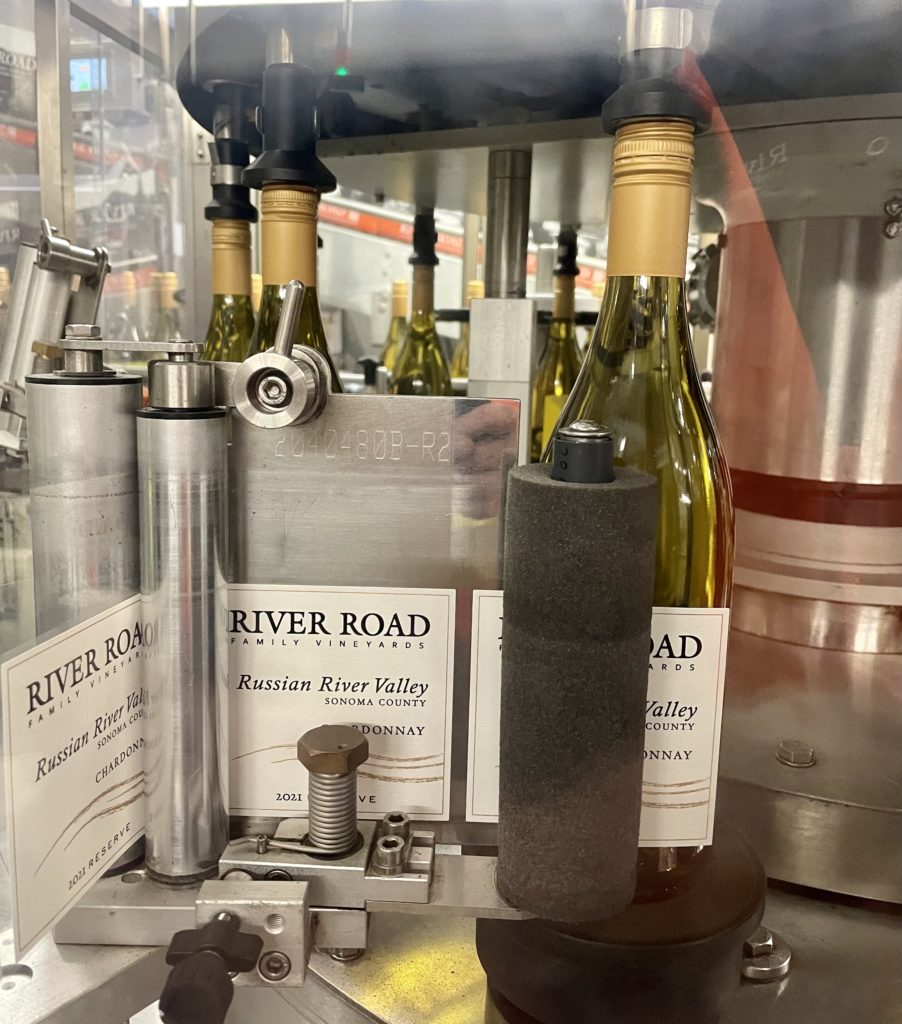 The labels affixed to each bottle
The labels affixed to each bottle
Boxing:
- The finished bottles are then put into sealed boxes.
- There are twelve bottles that hold 2.377 gallons of wine in each case. Dependent on materials, each case weighs approximately 36 pounds.
- The cases are then stacked onto pallets and are now ready to ship to their end destination, ready to be enjoyed!
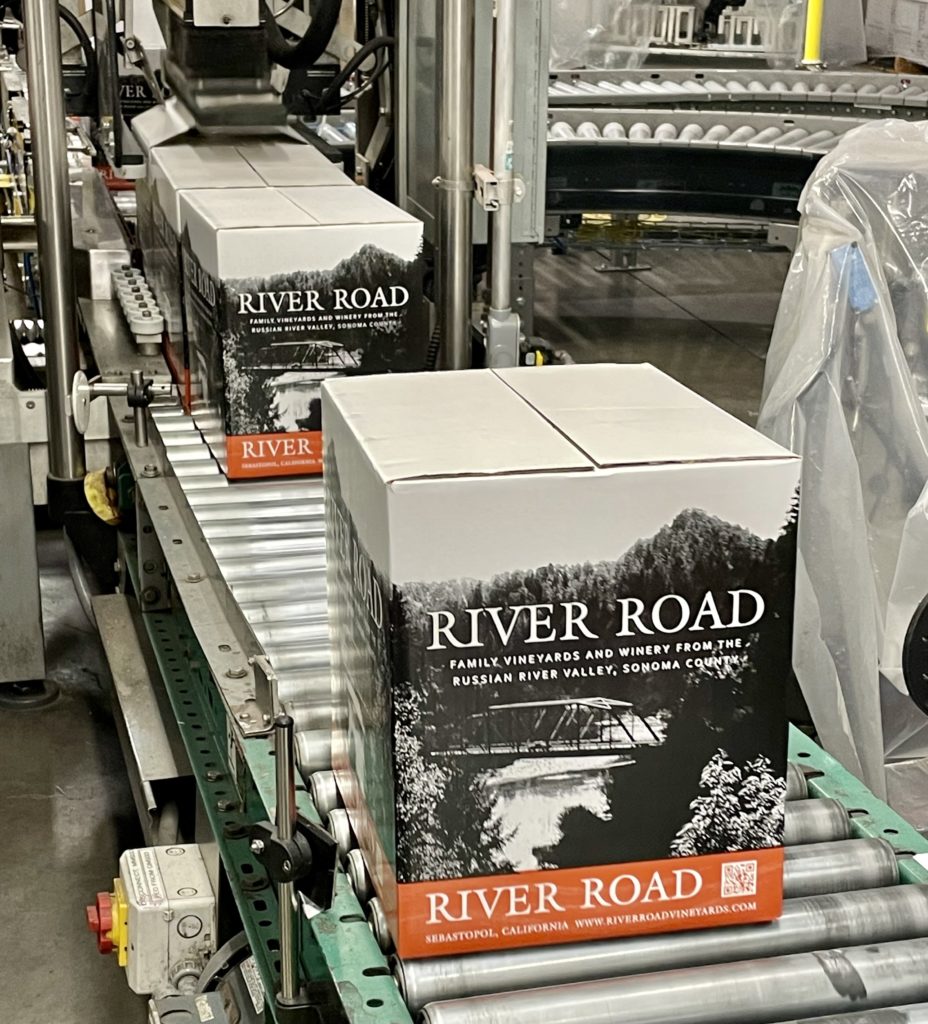 A finished case rolling down the bottling line!
A finished case rolling down the bottling line!
I hope you enjoyed learning about the bottling process, and I can’t wait for you to try the newly bottled 2021 River Road Russian River Valley Chardonnay!
On behalf of the entire team here at Ron Rubin Winery, we wish you all continued good health!
Be Well,

